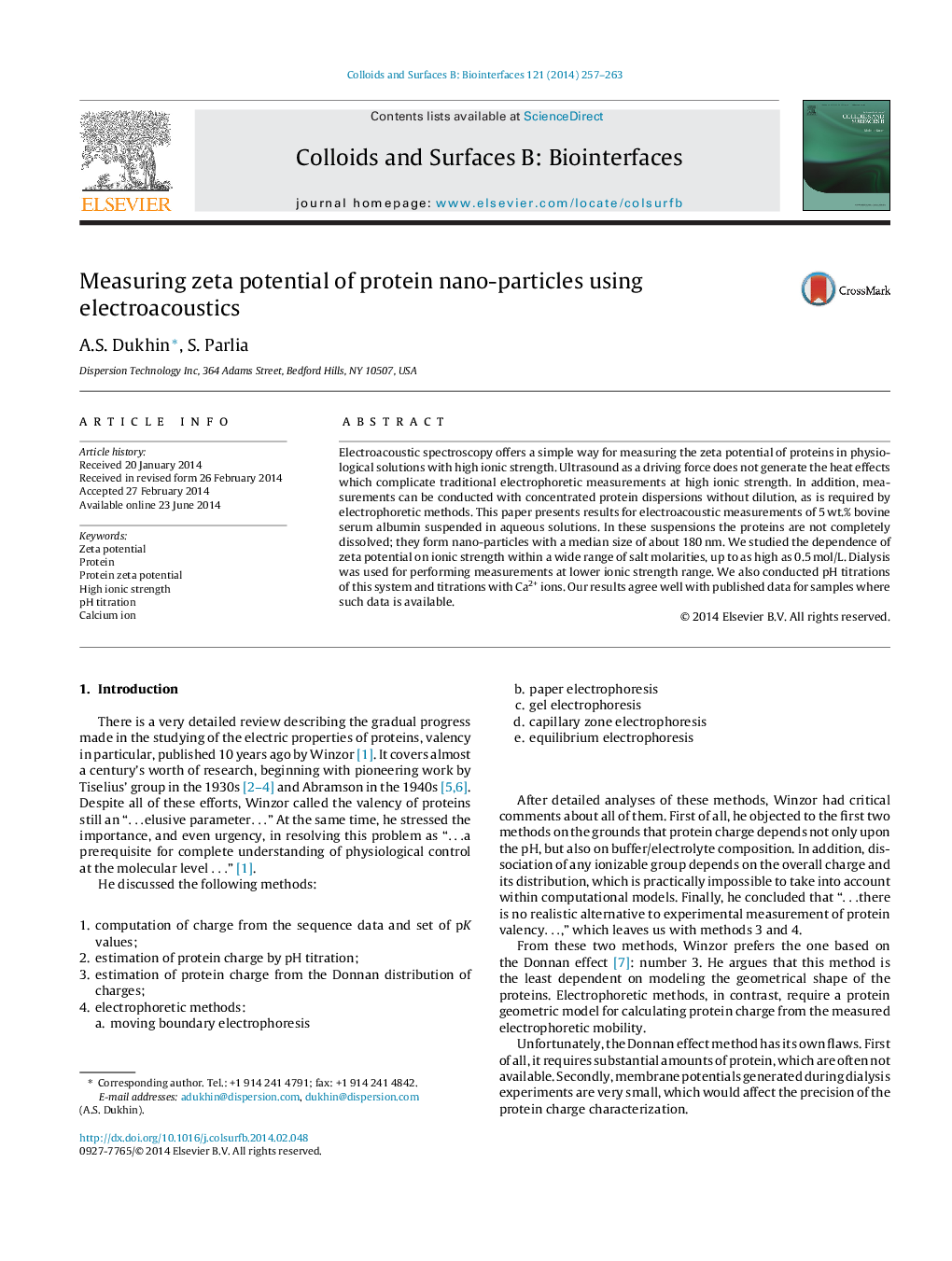| Article ID | Journal | Published Year | Pages | File Type |
|---|---|---|---|---|
| 599631 | Colloids and Surfaces B: Biointerfaces | 2014 | 7 Pages |
•Novel set-up using electroacoustics allows for studying zeta potential in proteins.•Results for protein aggregates agree with light scattering in applicable range.•Technique can be applied at high ionic strength.•Technique allows for simple monitoring of protein recharging.
Electroacoustic spectroscopy offers a simple way for measuring the zeta potential of proteins in physiological solutions with high ionic strength. Ultrasound as a driving force does not generate the heat effects which complicate traditional electrophoretic measurements at high ionic strength. In addition, measurements can be conducted with concentrated protein dispersions without dilution, as is required by electrophoretic methods. This paper presents results for electroacoustic measurements of 5 wt.% bovine serum albumin suspended in aqueous solutions. In these suspensions the proteins are not completely dissolved; they form nano-particles with a median size of about 180 nm. We studied the dependence of zeta potential on ionic strength within a wide range of salt molarities, up to as high as 0.5 mol/L. Dialysis was used for performing measurements at lower ionic strength range. We also conducted pH titrations of this system and titrations with Ca2+ ions. Our results agree well with published data for samples where such data is available.
Graphical abstractFigure optionsDownload full-size imageDownload as PowerPoint slide
